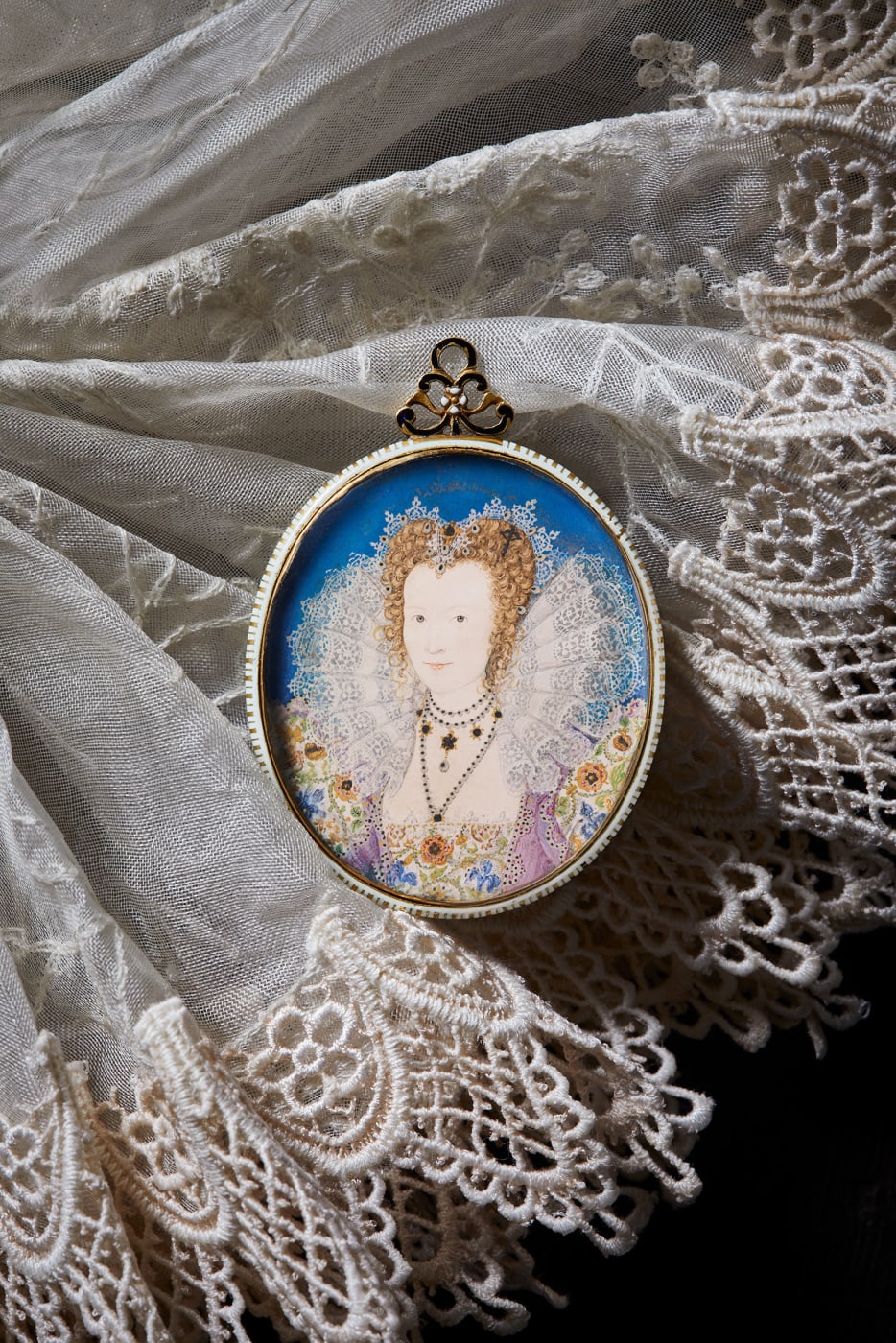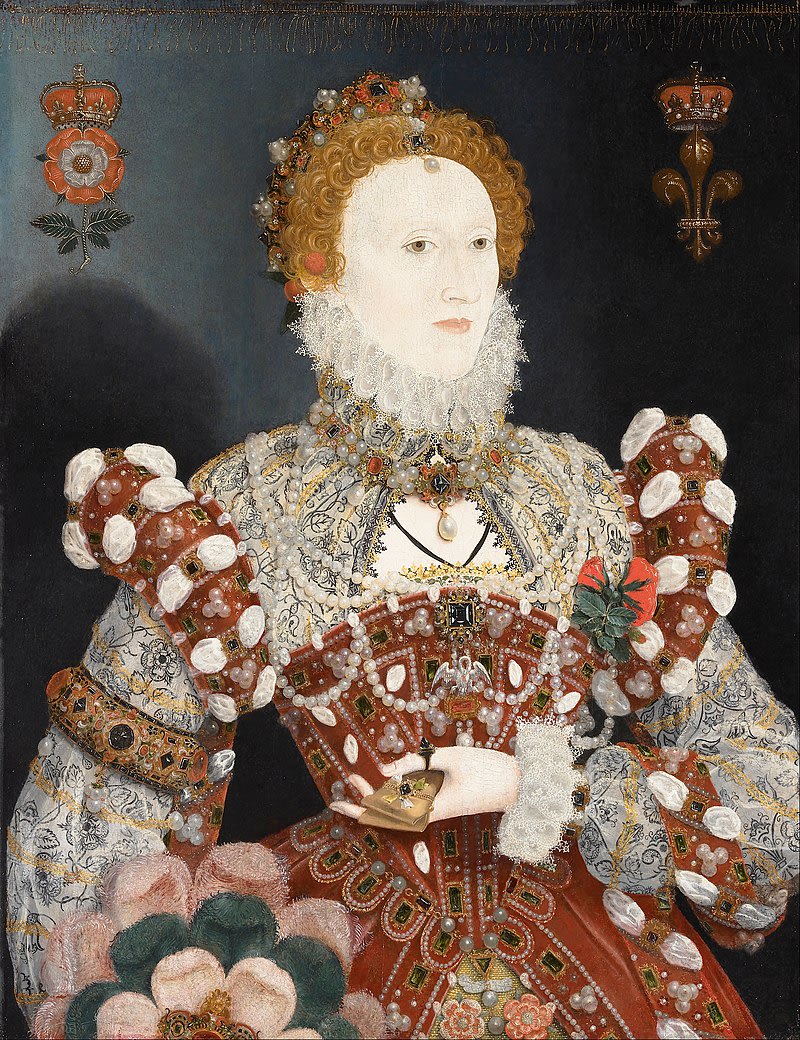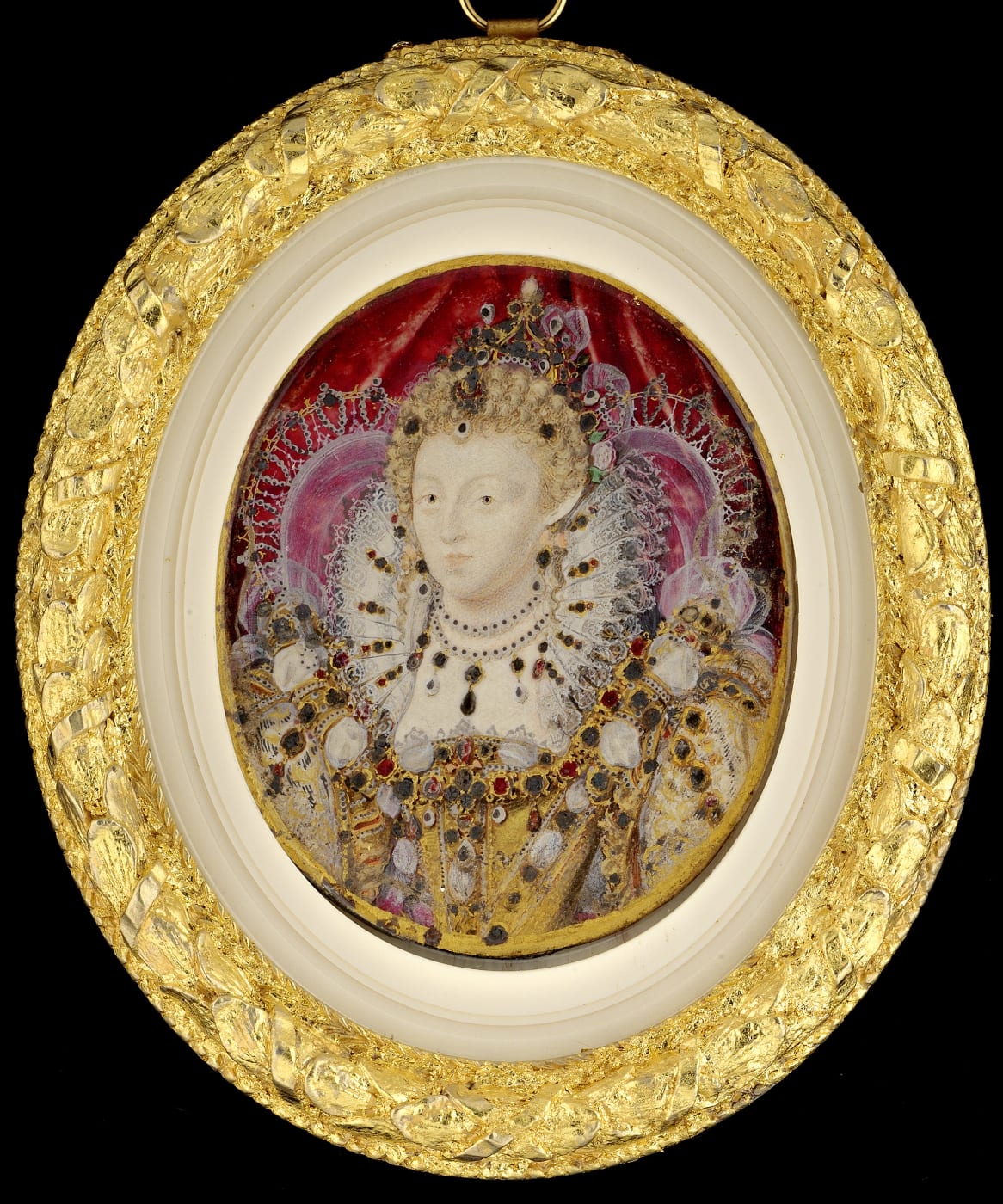Artist in Focus | April 2022
Nicholas Hilliard
There are few artists whose portraits can be said to define the self-image of an entire age; Nicholas Hilliard was a rare example of one such artist.
Born in Exeter, Nicholas was the son of Richard Hilliard, a goldsmith. Hilliard the elder was a staunch Protestant and, following the accession of the Catholic Queen Mary, decided to send his son to Geneva for his safety, thus in 1557 Hilliard left in the train of John Bodley. He travelled via Germany where he might have had his first exposure to the works of Albrecht Dürer (1471-1528), whom Hilliard considered the most 'exquisite and perfect a Painter…'.[1]
After The death of Mary I, the Protestant succession was restored with the coronation of Queen Elizabeth I in 1558. By 1559, the Bodley's had returned to England, moving to London with Hilliard. On 13th November 1562, Hilliard was admitted into the household of his master, Robert Brandon (d.1591), goldsmith and jeweller to the new queen. Through Brandon, Hilliard gained two significant introductions: the first was to his future wife, Alice (Fig.1), Robert's third surviving child; the second was to Queen Elizabeth herself (Fig. 2).
In the early 1570s, Hilliard found a champion in Robert Dudley, Earl of Leicester (1532/3-88). As Elizabeth's favourite, he was a powerful and influential figure at court and it was likely through him that Hilliard received his first royal commission, which survives in the form of a portrait of Elizabeth dated to 1572 [National Portrait Gallery]. But Elizabeth was ungenerous in her spending on art and Hilliard, perhaps sensing an opportunity to capitalise on his fluent command of the French language, went to France in the train of the English ambassador, Amias Paulet.
Hilliard was able to convert his learnings in France to his professional advantage on his return to England in 1578. Over the course of the 1580s, Hilliard became 'the queen's - and England's - leading practitioner of the visual arts'.[3] As well as painting the Queen in works such as The Pelican[2] Portrait (fig. 3), during these years Nicholas Hilliard painted[3] likenesses of many of the most celebrated figures of the Elizabethan court, including Sir Francis Drake (1540-96) in and Sir Walter Raleigh (1554-1618).
But no matter how hard he worked for his royal patron, Hilliard was never well paid by Elizabeth. The Queen and her ministers continually made promises of remuneration that they were not actually obliged to realise. And, around the end of the 1580s, Hilliard began to face competition. His erstwhile pupil, Isaac[5] Oliver had begun to work as an independent miniaturist in his own right, and his talent - on par to that of Hilliard - stood to lose Hilliard private commissions. Likely in response, Hilliard developed the "cabinet miniature" format, which showed his sitters at full length and occupying naturalistic spaces; an example of these works is the famed 'Young Man among Roses' (Fig. 4).
In 1591, Hilliard was commissioned to design the third great seal of the realm (Elizabeth had never fully accepted his first effort). The commission proved extremely difficult and occupied much of Hilliard's time, allowing Oliver to secure commissions that he might otherwise have taken. Nevertheless, this period saw Hilliard finally - likely thanks to lobbying by Sir Robert Cecil - given a secure grant of royal remuneration. He was given an annuity of £40 per annum and made goldsmith and limner to the monarch. Following the death of Elizabeth in 1603 and the subsequent accession of James I, Hilliard managed to retain his position. In the years that followed, his style continued to evolve, with Hilliard introducing red velvet curtains, for instance, into the backgrounds of many of his works.
Hilliard's final decade was not an easy one. His wife Alice predeceased him and Hilliard, who had never been financially prudent, came under renewed pecuniary strain following the death of his patron, Sir Robert Cecil. One creditor - to whom he owed the large sum of £40 (equivalent to his royal annuity) accused him, not unjustly, of using his reputation as security against his debts. He successfully sued Hilliard so that in 1617 - at the then-advanced age of seventy - he was thrown into debtor's prison.[4] An old friend from his days in France, Francis Bacon, Baron Verulam, heard of Hilliard's plight and sent £11 for 'old Mr Hilliard' shortly following his release in 1618[5] but by now Hilliard had likely entered into his final illness. The exact date Hilliard died is unknown, however, he was buried at the Church of St Martin's-in-the-Fields on 7th January 1619.









